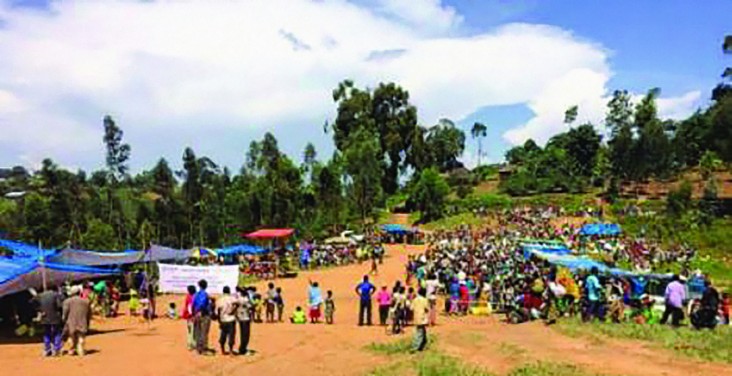- Work With USAID
- How to Work with USAID
- Organizations That Work With USAID
- Find a Funding Opportunity
- Resources for Partners
- Careers
- Get Involved
Speeches Shim

Background
Samaritan’s Purse (SP) Emergency Response and Economic Recovery program, also known as “USAIDizi”, efficiently and rapidly responds to the needs of conflict-affected populations in Eastern Democratic Republic of the Congo (DRC) by improving access to food, enhancing household resilience, and promoting economic recovery. SP DRC met emergency needs, while simultaneously promoting rapid recovery of livelihoods and markets.
The project improved food security through increased agricultural production and diversified consumption. The project utilized a combination of food and non-food item distribution, direct inputs (improved seeds and tools), and agricultural training to help vulnerable households cope with displacement and loss. Trainings covered topics such as improved agricultural techniques, sustainable pest-control practices, and post-harvest crop storage.
Provision of food and non-food items was conducted through a combination of direct distributions and voucher fairs. Items were directly distributed in areas with high levels of insecurity and/or poor infrastructure that resulted in limited market access. Cash-based voucher fairs were utilized in areas with secure, accessible, and integrated markets. Local vendors gathered at voucher fair sites, providing locally preferred produce and non-food items to beneficiaries.
Faith-Based and Community Initiatives
SP sought to include numerous community leaders in the project in order to ensure implementation was effective and contextual, and gained community buy-in. SP worked closely with village leadership (village chiefs), health facilities, local authorities, schools, and local faith-based organizations. There were nine churches engaged in the project through the use of church leadership within sub-branches in 157 villages. These local faith-based organizations came from a variety of backgrounds, including Protestant, Catholic, Assembly of God, and Indigenous traditions. They provided the use of their facilities as meeting venues and for indoor beneficiary trainings. They also provided space on church grounds for conducting distributions or voucher fairs. Churches provided safe, adequate, and con-venient assembly points for beneficiaries, who were largely members of the local congregations. Even those beneficiaries with no affiliation to the church felt secure and safe at the venues.
Churches further supported the project by sharing project-mobilization messages to beneficiaries via routine church events. Church leaders, alongside other community leaders, assisted project staff in addressing community complaints during various phases of the project. They also acted as a critical and trusted source of local and regional security information, enabling a safe project environment for beneficiaries.
SP established high standards and practices in order to guarantee there was no religious bias in the involve-ment of local FBOs. SP worked with them alongside other community leaders and opinion leaders in an open and transparent manner. Since project activities were aimed at vulnerable households, beneficiary targeting was based purely on vulnerability criteria.
Results
Year one activities resulted in the number of households with an “acceptable” diet increasing by 40 percent and the number of households with a “poor” diet decreasing by 44 percent. At the end of year two, the majority of households (56.5 percent) had an “acceptable” diet, as compared to 0 percent in the “acceptable” range at project inception.
SP gained understanding of the contextual appro-priateness, unintended consequences, and necessary adaptations of selected modalities and activities. For example, SP found that using a voucher-fair modality, when deemed appropriate, carried the additional benefits of a quick response time, protection against voucher fraud, improved quality and more predictable quantity of local commodities, well-organized voucher distribution, and enhanced independence and dignity for beneficiaries.
Conclusion
In locations with secure, accessible, and integrated market systems, a cash-based, voucher-fair modality has been found to be highly efficient for distributing food and non-food items to beneficiary households.
Local faith-based organizations are an integral component of program success. They have high levels of community influence and can use this influence to spread information about distributions and improved agricultural practices. They are also pivotal in providing space for meetings, voucher fairs, and distributions.

Comment
Make a general inquiry or suggest an improvement.